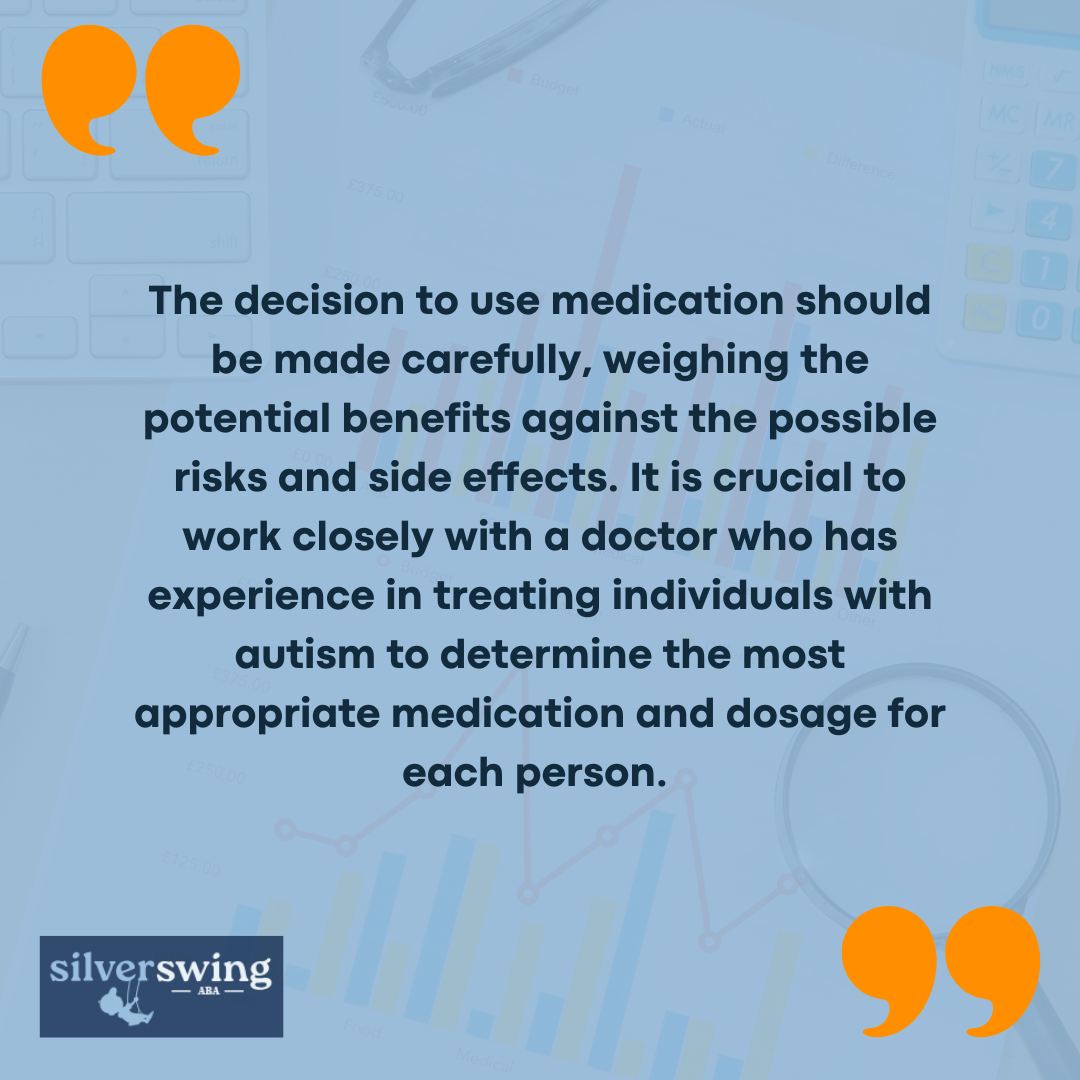While there is no medication that can cure ASD or treat all of its symptoms, certain medications can be prescribed to help manage specific behaviors associated with autism. These medications are typically used to address symptoms such as hyperactivity, aggression, anxiety, obsessive-compulsive behaviors, and attention difficulties.
That said, it’s important to note that medication is usually prescribed on a trial basis, and its effectiveness can vary from person to person. Without further ado, let’s look at some of the most effective medical interventions intended for autism.

Behavioral Therapies
Behavioral therapies play a crucial role in helping individuals with autism spectrum disorder (ASD) manage their symptoms and improve their overall quality of life. There are two widely recognized behavioral therapies that fall under this category.
These are the following:
Applied Behavior Analysis (ABA)
Applied Behavior Analysis (ABA) is a behavioral therapy approach that has the most evidence for treating symptoms of ASD and is widely accepted among educators and healthcare professionals. ABA focuses on understanding and modifying behavior by breaking down complex tasks into smaller, achievable steps. It relies on positive reinforcement to encourage desired behaviors and reduce problematic ones.
ABA can be implemented through various teaching styles, such as discrete trial training (DTT) and pivotal response training (PRT). DTT involves structured, one-on-one teaching sessions with clear prompts and consequences, while PRT is a more naturalistic approach that targets pivotal skills to improve overall functioning.
Progress in ABA therapy is tracked and measured to ensure effectiveness and make adjustments as needed.
Developmental Approaches
Developmental approaches for autism aim to improve specific developmental skills and are often combined with behavioral therapies. These approaches focus on enhancing language, social, and physical skills to promote overall development and independence.
Speech and language therapy is a common developmental therapy for individuals with ASD. It targets improving speech and language understanding and use through various techniques, including structured activities, visual supports, and social communication strategies.
Occupational therapy is another developmental approach that focuses on teaching individuals with ASD skills necessary for daily living, including dressing, eating, bathing, and social interactions. Occupational therapists work with individuals to develop strategies and techniques that enhance their independence and quality of life.
One specific developmental approach based on ABA principles is the Early Start Denver Model (ESDM). This approach is typically used with children aged 12-48 months and aims to improve language, social, and learning skills. It involves intensive, play-based interventions delivered by trained therapists and is designed to capitalize on the child’s natural interests and motivations.

Developmental Therapies
In addition to behavioral therapies, developmental therapies play a crucial role in the treatment and support of individuals with autism. These therapies focus on specific areas of development and aim to enhance skills and abilities.
Speech and Language Therapy
Speech and language therapy is a fundamental component of intervention for individuals with autism spectrum disorder (ASD). Many individuals with ASD experience challenges in social communication, such as difficulty with expressive language, understanding gestures, or engaging in conversations. Speech therapy helps address these deficits and improve communication skills.
During speech and language therapy sessions, speech-language pathologists work with individuals with autism to develop effective communication strategies. They may use various techniques and tools tailored to the individual’s needs and abilities.
The therapy sessions may focus on improving articulation, expanding vocabulary, enhancing sentence structure, and promoting pragmatic language skills, such as understanding social cues and engaging in appropriate conversations.
Collaboration between speech-language pathologists, teachers, support personnel, families, and peers is essential to reinforce the skills learned in therapy and promote functional communication in natural settings. Speech and language therapy can significantly enhance an individual’s ability to express their needs, wants, and thoughts effectively, improving overall quality of life.
Occupational Therapy
Occupational therapy (OT) is another valuable developmental therapy for individuals with autism. It focuses on improving skills necessary for daily living and independent functioning. OT helps individuals with autism develop the necessary skills to engage in activities such as dressing, eating, bathing, and relating to others.
One approach within occupational therapy is the Early Start Denver Model (ESDM). This developmental approach, based on the principles of Applied Behavior Analysis (ABA), is specifically designed for children aged 12 to 48 months. ESDM aims to improve language, social, and learning skills through structured and play-based activities.
Occupational therapy programs are individualized based on evaluations and goals. They target specific areas of concern, such as sensory integration and motor deficits, which are often associated with autism. Through OT, individuals with autism learn life skills involving fine-motor movements, improve their quality of life, and enhance their participation in daily activities.
The focus of occupational therapy may vary depending on the age of the individual. For young children, sensory integration and sensorimotor issues are often addressed, while older children may receive support for social behavior and motor skills.

Pharmacological Approaches
Pharmacological approaches also play a role in managing co-occurring symptoms and conditions that individuals with autism may experience. It is important to note that medication should always be used under the guidance and supervision of a doctor experienced in treating individuals with autism, as all medications carry risks, some of them serious.
Managing Co-occurring Symptoms
Certain medications may be prescribed to help manage specific co-occurring symptoms and conditions in individuals with autism. These medications can address a range of issues such as high energy levels, focus issues, self-harming behavior, anxiety, depression, seizures, sleep problems, and gastrointestinal problems.
However, it is important to remember that medication is not a one-size-fits-all solution and should be tailored to the individual’s needs.

Regular monitoring and communication with the doctor are essential to assess the effectiveness of the medication and make any necessary adjustments.
Working with Experienced Doctors
When considering pharmacological approaches for autism, it is imperative to work with doctors who have expertise in treating individuals with autism. These doctors will have a better understanding of the unique needs and challenges faced by individuals on the autism spectrum. They can provide guidance and recommend appropriate medications based on an individual’s specific symptoms, medical history, and overall health.
Experienced doctors will also have insight into potential interactions between medications and any other treatments or therapies the individual may be receiving. They can help navigate the complexities of medication management, including monitoring for any side effects and adjusting dosages as needed.
Addressing underlying medical issues is a vital component of medical interventions for autism. By understanding the biological basis of autism and implementing tailored treatment approaches, individuals with autism can receive the necessary support to improve their quality of life and reach their full potential.




